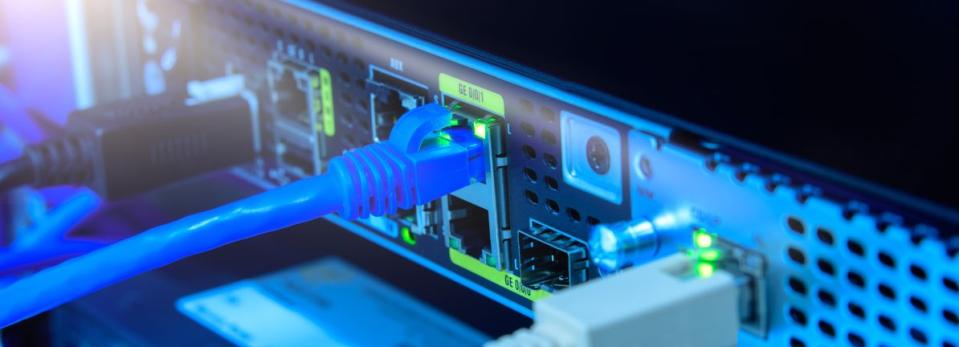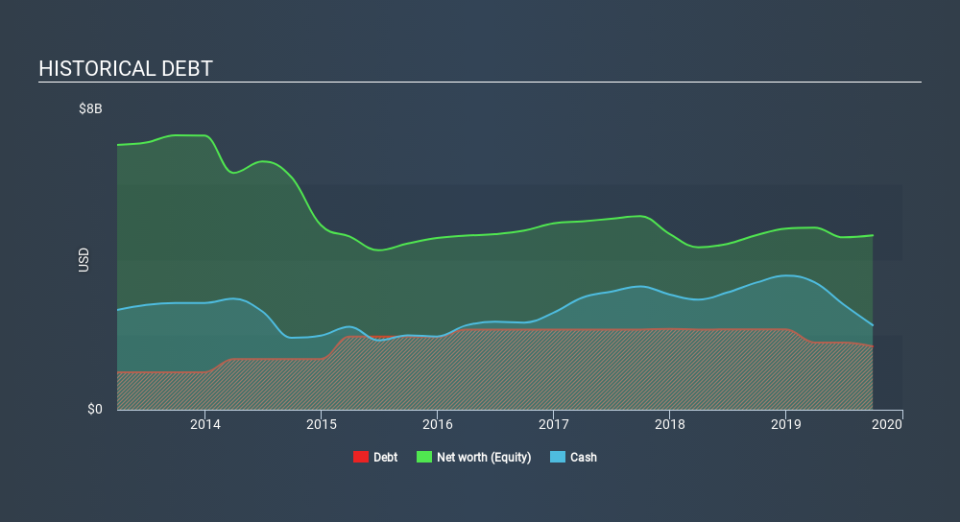Juniper Networks (NYSE:JNPR) Seems To Use Debt Quite Sensibly

David Iben put it well when he said, 'Volatility is not a risk we care about. What we care about is avoiding the permanent loss of capital. It's only natural to consider a company's balance sheet when you examine how risky it is, since debt is often involved when a business collapses. As with many other companies Juniper Networks, Inc. (NYSE:JNPR) makes use of debt. But the more important question is: how much risk is that debt creating?
What Risk Does Debt Bring?
Debt and other liabilities become risky for a business when it cannot easily fulfill those obligations, either with free cash flow or by raising capital at an attractive price. If things get really bad, the lenders can take control of the business. However, a more common (but still painful) scenario is that it has to raise new equity capital at a low price, thus permanently diluting shareholders. Having said that, the most common situation is where a company manages its debt reasonably well - and to its own advantage. The first thing to do when considering how much debt a business uses is to look at its cash and debt together.
View our latest analysis for Juniper Networks
How Much Debt Does Juniper Networks Carry?
As you can see below, at the end of September 2019, Juniper Networks had US$1.69b of debt, up from US$2.1k a year ago. Click the image for more detail. However, it does have US$2.25b in cash offsetting this, leading to net cash of US$564.7m.
A Look At Juniper Networks's Liabilities
Zooming in on the latest balance sheet data, we can see that Juniper Networks had liabilities of US$1.42b due within 12 months and liabilities of US$2.69b due beyond that. On the other hand, it had cash of US$2.25b and US$635.8m worth of receivables due within a year. So its liabilities total US$1.22b more than the combination of its cash and short-term receivables.
Given Juniper Networks has a market capitalization of US$8.20b, it's hard to believe these liabilities pose much threat. But there are sufficient liabilities that we would certainly recommend shareholders continue to monitor the balance sheet, going forward. While it does have liabilities worth noting, Juniper Networks also has more cash than debt, so we're pretty confident it can manage its debt safely.
But the bad news is that Juniper Networks has seen its EBIT plunge 20% in the last twelve months. If that rate of decline in earnings continues, the company could find itself in a tight spot. There's no doubt that we learn most about debt from the balance sheet. But it is future earnings, more than anything, that will determine Juniper Networks's ability to maintain a healthy balance sheet going forward. So if you want to see what the professionals think, you might find this free report on analyst profit forecasts to be interesting.
Finally, a company can only pay off debt with cold hard cash, not accounting profits. Juniper Networks may have net cash on the balance sheet, but it is still interesting to look at how well the business converts its earnings before interest and tax (EBIT) to free cash flow, because that will influence both its need for, and its capacity to manage debt. Happily for any shareholders, Juniper Networks actually produced more free cash flow than EBIT over the last three years. There's nothing better than incoming cash when it comes to staying in your lenders' good graces.
Summing up
Although Juniper Networks's balance sheet isn't particularly strong, due to the total liabilities, it is clearly positive to see that it has net cash of US$564.7m. And it impressed us with free cash flow of US$526m, being 116% of its EBIT. So we don't have any problem with Juniper Networks's use of debt. There's no doubt that we learn most about debt from the balance sheet. However, not all investment risk resides within the balance sheet - far from it. For example, we've discovered 1 warning sign for Juniper Networks that you should be aware of before investing here.
If you're interested in investing in businesses that can grow profits without the burden of debt, then check out this free list of growing businesses that have net cash on the balance sheet.
If you spot an error that warrants correction, please contact the editor at editorial-team@simplywallst.com. This article by Simply Wall St is general in nature. It does not constitute a recommendation to buy or sell any stock, and does not take account of your objectives, or your financial situation. Simply Wall St has no position in the stocks mentioned.
We aim to bring you long-term focused research analysis driven by fundamental data. Note that our analysis may not factor in the latest price-sensitive company announcements or qualitative material. Thank you for reading.

 Yahoo Finance
Yahoo Finance 
